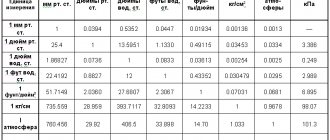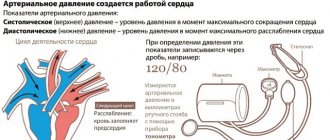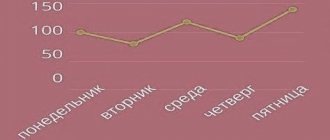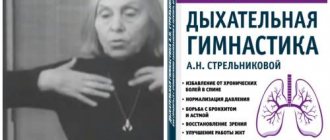Blood pressure (BP) should be understood as the force with which blood presses on the vascular walls. Mean arterial pressure is the average blood pressure of a person, that is, the average blood pressure during one cardiac cycle. It is measured to understand how well all the organs of the body function, how they are saturated with blood and essential nutrients.
Mean arterial pressure is the pressure during all phases of the cardiac cycle. Its normal value ranges from 70-110 mmHg.
Video: What is blood pressure?
The blood pressure level is usually characterized by two numbers, which we obtain when measured using the Korotkoff method. The larger number is an indicator of systolic pressure, the smaller one is diastolic.
Systolic (upper) blood pressure is the blood pressure in the arteries at the time of systole (contraction) of the heart. The ventricles of the heart contract and push blood into the vessels, creating pressure there. The level of systolic blood pressure depends mainly on the strength and speed of heart contraction and the condition of the myocardium.
Diastolic (lower) blood pressure is the pressure that is maintained in the vessels at the moment of relaxation (diastole) of the heart. Diastolic pressure is formed due to the contraction of peripheral arteries, through which blood flows to organs and tissues. Therefore, the tone and elasticity of blood vessels play a key role in the formation of lower pressure indicators. In addition, the value of diastolic pressure is influenced by the total blood volume and heart rate.
The difference between systolic and diastolic is called pulse pressure. Fluctuations in pulse pressure depend entirely on the levels of upper and lower pressure. Normal pulse pressure is about 30–40 mmHg. Art., but not more than 60% of systolic. When this value increases or decreases, the normal blood supply to organs and tissues is disrupted, and the load on the heart and blood vessels increases.
Causes of low pulse pressure may include decreased stroke volume (eg, heart failure, hypovolemia, and aortic stenosis), as well as increased peripheral vascular resistance (eg, prolonged exposure to cold or severe heart failure).
High pulse pressure accelerates the natural aging of internal organs, especially the heart, brain and kidneys, and is a very important indicator of the risk of heart disease and the development of atrial fibrillation.
Within normal values, blood pressure is higher in men, obese people, city dwellers, and intellectual workers. Lower blood pressure numbers are observed in women (especially during normal pregnancy), rural residents and athletes.
Blood pressure measurement
To independently calculate mean arterial pressure, you need to obtain reliable indicators of systolic and diastolic blood pressure. To do this, you must measure your blood pressure correctly. The most accurate results are obtained when using a mechanical tonometer. Measurements by electronic (automatic) devices have a small error.
See also: Use of adrenergic blockers for hypertension
To obtain reliable data, you should not drink coffee, alcohol, or energy drinks an hour before the procedure. After intense movement, the cardiac cycle returns to a resting state gradually. You can measure your blood pressure after 20-30 minutes of rest. Before the procedure, you should empty your bladder - its fullness may distort the results obtained.
The measurement is taken while sitting in a calm, relaxed position. You should not put one leg on top of the other - this affects blood circulation throughout the body. The hand on which the mechanical or automatic tonometer is fixed should be relaxed. The cuff of the device must be exactly at the level of the heart. During the procedure, you cannot strain your muscles, talk, cough, or move. If it is not possible to measure blood pressure yourself, you should contact a medical facility. Having obtained the systolic and diastolic pressure indicators, you need to use special calculation formulas that will allow you to calculate the average blood pressure.
Attention! The accuracy of measurements in healthcare settings may be reduced in people with white coat hypertension. This is a psychosomatic syndrome that causes an increase in blood pressure in patients in the presence of doctors or nurses. If such a psychological reaction is suspected, blood pressure should be measured independently or using the method of daily automatic monitoring.
Table: Normal blood pressure by age
According to medical statistics, about seven million people die annually from diseases associated with high blood pressure (BP). At the same time, numerous studies in different countries confirm that 67% of hypertensive patients are not even aware of their problems with blood pressure! Blood pressure and pulse are individual criteria, and these important indicators of the body’s health depend on various factors, including age. For example, in a child, low blood pressure will mean normal, for an adult the same indicators will mean hypotension.
Pressure rate table:
| Age, years | Pressure (minimum value), mmHg. | Pressure (average), mmHg. | Pressure (maximum value), mmHg. |
| Up to a year | 75/50 | 90/60 | 100/75 |
| 1-5 | 80/55 | 95/65 | 110/79 |
| 6-13 | 90/60 | 105/70 | 115/80 |
| 14-19 | 105/73 | 117/77 | 120/81 |
| 20-24 | 108/75 | 120/79 | 132/83 |
| 25-29 | 109/76 | 121/80 | 133/84 |
| 30-34 | 110/77 | 122/81 | 134/85 |
| 35-39 | 111/78 | 123/82 | 135/86 |
| 40-44 | 112/79 | 125/83 | 137/87 |
| 45-49 | 115/80 | 127/84 | 139/88 |
| 50-54 | 116/81 | 129/85 | 142/89 |
| 55-59 | 118/82 | 131/86 | 144/90 |
| 60+ | 121/83 | 134/87 | 147/91 |
How to decipher average pressure readings
Similarly, just as there is a norm for blood pressure, there are certain limits beyond which the average pressure should not go.
Doctors know the values that are considered normal for a healthy adult. Minor deviations are not taken into account, especially if they were preceded by factors affecting pressure. In general, after it has been possible to calculate the pressure using the formula, it is considered normal if it is within mmHg. Art. If the average, pulse, systolic or diastolic pressure does not correspond to a certain norm according to age, then you need to consult a specialist. The doctor will listen carefully, assess the likelihood of the influence of external factors, and then may send you for diagnostics to identify internal factors due to which the pressure is not normal.
Absolute
This is the name of the total pressure under which a substance or object is located, without taking into account the influence of other gaseous components of the atmosphere.
It is measured in pascals and is the sum of excess and atmospheric pressure. It is also the difference between barometric and vacuum types.
It is calculated using the formula P = P2 + P3 or P = P2 - P4.
The starting point for absolute pressure under the conditions of planet Earth is the pressure inside the container from which air has been removed (that is, a classic vacuum).
Only this type of pressure is used in most thermodynamic formulas.
Indications for use
The procedure is prescribed to patients who complain of:
- fatigue;
- headaches, dizziness;
- decreased vision, spots before the eyes;
- noise or ringing in the ears, stuffy ears.
ABPM can also be prescribed to a person who has no unpleasant symptoms, but when the doctor measures the blood pressure, it is elevated. The reason for this may be the “white coat” phenomenon: this is an individual characteristic that is expressed in a specific psychological reaction to doctors. A person with the “white coat” phenomenon begins to worry excessively during any medical procedures, so his blood pressure and heart rate increase. Measuring blood pressure and heart rate using daily monitoring allows us to exclude the influence of this phenomenon on the diagnosis.
Conclusion
It is important to consider that some people have high or slightly low blood pressure throughout their lives; this is their “working” pressure at which they feel normal. It’s another matter if the indicators have changed in any direction, which indicates the presence of cardiovascular and other pathologies
As for average blood pressure, if it is below 60, it is dangerous to health. The fact is that this indicator indicates the supply of vital organs with blood, and for their normal performance the indicator is cf. Blood pressure should be above 60.
Among the factors due to which average blood pressure data may differ from the norm, it is necessary to note not only diseases of the internal organs, but also the use of medications. Therefore, when prescribing certain medications, the doctor finds out from the patient whether he is taking any drugs, so as not to cause a cumulative effect.
Partial pressure and its formula
Although the P = pgh method is applicable for both liquids and gases, it is better to calculate the pressure in the latter in a slightly different way.
The fact is that in nature, as a rule, absolutely pure substances are not very often found, because mixtures predominate in it. And this applies not only to liquids, but also to gases. And as you know, each of these components exerts a different pressure, called partial.
It's quite easy to define. It is equal to the sum of the pressure of each component of the mixture under consideration (ideal gas).
It follows from this that the partial pressure formula looks like this: P = P1+ P2+ P3... and so on, according to the number of constituent components.
There are often cases when it is necessary to determine air pressure. However, some people mistakenly carry out calculations only with oxygen according to the scheme P = pgh. But air is a mixture of different gases. It contains nitrogen, argon, oxygen and other substances. Based on the current situation, the air pressure formula is the sum of the pressures of all its components. This means that we should take the above-mentioned P = P1+ P2+ P3...
What to do if the indicators are elevated?
If the doctor has detected high blood pressure in the patient, he will recommend measures to normalize the indicator. If the deviation is not yet considered hypertension, but is a temporary reaction to the influence of external factors, then it is enough to eliminate the cause of the increase in blood pressure and carry out symptomatic treatment.
If a person develops hypertension, then constant therapy is required. If the disease is mild, you can do without medication by simply changing your lifestyle. In moderate or severe forms of the pathology, drug treatment cannot be avoided.
The following medications are used:
- ACE inhibitors.
- Adrenergic blockers.
- Diuretics to remove excess fluid from the body.
- Sedatives if there are disorders of the nervous system.
- Calcium antagonists.
Medicines alone will not help control hypertension. The following recommendations must be followed:
- Set up a daily routine. Sleep at least 8 hours a day.
- Engage in moderate physical activity, for example, running, swimming, gymnastics.
- Reduce the amount of salt and sugar you consume.
- Eliminate all harmful foods from your diet.
- Stop smoking and drinking alcohol.
- Avoid stressful situations.
- Attend physiotherapeutic procedures if prescribed by the attending doctor.
The foundation of good health is a healthy diet, moderate exercise, and proper drinking habits.
Folk remedies can be used as an addition to the main therapy. They are not able to cope with hypertension on their own, but as an auxiliary therapy they are quite appropriate. You can use certain non-traditional recipes only with the permission of your doctor.
Article information
wikiHow works like a wiki, which means that many of our articles are written by multiple authors. This article was created by volunteer authors to edit and improve it.
Category: Cardiovascular diseases
In other languages:
English: Calculate Mean Arterial Pressure, Español: calcular tu presión arterial media, Italiano: Calcolare la Pressione Arteriosa Media, Français: calculer la moyenne de la pressure artérielle, Deutsch: Den durchschnittlichen Blutdruck berechnen, Bahasa Indonesia: Menghitung Tekanan Darah Arteri Rerata, Português : Calcular a Pressão Arterial Media
- Seal
- Edit
This page has been viewed 77,823 times.
Prevention and recommendations
To keep blood pressure within normal limits, you should follow the recommendations of doctors:
- Introduce a lot of fresh vegetables and fruits into your diet. They contain a large amount of vitamins and beneficial elements necessary for normal heart function. Complex carbohydrates will relieve the heart muscle.
- Eat more fish and protein.
- Minimize your consumption of coffee and black tea as they contain high amounts of caffeine.
- Play sports, walk more in the fresh air.
- Avoid sweets, as they lead to extra pounds and the development of pancreatic diseases.
- Rest after a hard day should not be neglected; it is important that the body recovers from physical and mental stress.
- Consume as many fermented milk products as possible. They help not only improve intestinal function, but also have a beneficial effect on the functioning of the heart.
To prevent a heart attack, doctors prescribe special medications. They help normalize blood pressure, improve blood circulation, strengthen blood vessels and improve the general condition of the patient. Medicines are prescribed only by a specialist. Self-medication is unacceptable.
Every person should know how to find average pressure. His indicators indicate his state of health. Deviations from the norm, as a rule, indicate the development of pathology. In this case, you should consult a doctor to undergo an examination and determine the reason for the change in values. If a disease is detected, adequate treatment should be started immediately.
Doctors recommend
For effective treatment of hypertension at home, experts advise Phytolife
. This is a unique tool:
- Normalizes blood pressure
- Prevents the development of atherosclerosis
- Reduces sugar and cholesterol levels
- Eliminates the causes of hypertension and prolongs life
- Suitable for adults and children
- Has no contraindications
Manufacturers have received all the necessary licenses and quality certificates both in Russia and in neighboring countries.
We offer a discount to readers of our site!
Do you still think that it is impossible to cure hypertension?
Hypertension, unfortunately, always leads to heart attack or stroke and death. For many years, we only stopped the symptoms of the disease, namely high blood pressure.
Only constant use of antihypertensive drugs could allow a person to live.
Now hypertension can be CURED; this is available to every resident of the Russian Federation.
Was the article helpful?
Rate the material on a five-point scale!
If you have any questions or want to share your opinion or experience, write a comment below.
RESULTS
ROOM ²ÑÑенное или ÑÑÑÑ Ð¿Ð¾Ð½Ð¸Ð¶ÐµÐ½Ð½Ð¾Ðµ давление нР°Ð¿ ÑоÑÑжении вÑей жизни, ÑÑÑо Ð¸Ñ Â“ÑабоÑее” дав ROOM °Ð»Ñно. RESULTS ² лÑбÑÑ ÑÑоÑонÑ, ÑÑо говоÑÐ¸Ñ Ð¾ наР» » й.
RESULTS 60 ´Ð¾ÑовÑÑ. ROOM + ²ÑÑ, Ð ¸ ROOM °Ð·Ð°ÑÐµÐ»Ñ ÑÑÑ. RESULTS 60.
General pressure formula for 7th grade physics
From the definition of a given physical quantity, one can determine the method for finding it. It looks like in the photo below.
In it, F is force and S is area. In other words, the formula for finding pressure is its force divided by the surface area on which it acts.
It can also be written as follows: P = mg / S or P = pVg / S. Thus, this physical quantity turns out to be related to other thermodynamic variables: volume and mass.
For pressure, the following principle applies: the smaller the space that is affected by the force, the greater the amount of pressing force that falls on it. If the area increases (with the same force), the desired value decreases.
Self-control diary
People with blood pressure abnormalities are advised to keep a self-monitoring diary. It is necessary in order to record tonometer readings at certain time intervals. Blood pressure will need to be measured regularly, so it is better to purchase a semi-automatic or automatic device than a mechanical one.
Keeping a diary is useful not only for the patient himself, but also for his treating doctor. Thanks to the patient’s records, the doctor will be able to track how effectively the treatment he prescribed is going and whether adjustments need to be made to the treatment tactics. Therefore, a self-monitoring diary is a mandatory attribute for all patients suffering from hypertension or hypotension.
Thus, mean arterial pressure is an important indicator that helps to identify disturbances in the functioning of the body. To calculate it, it is best to contact a specialist who will take into account all the nuances when determining blood pressure and select the optimal treatment if deviations are detected.
Pressure units
According to the standards of the International SI System, the physical phenomenon in question is measured in pascals (Cyrillic - Pa, Latin - Ra).
Based on the pressure formula, it turns out that one Pa is equal to one N (newton - divided by one square meter (unit of area).
However, in practice it is quite difficult to use pascals, since this unit is very small. In this regard, in addition to SI standards, this quantity can be measured differently.
Below are its most famous analogues. Most of them are widely used in the former USSR.
- Bars. One bar is equal to 105 Pa.
- Torrs, or millimeters of mercury. Approximately one torr corresponds to 133.3223684 Pa.
- Millimeters of water column.
- Meters of water column.
- Technical atmospheres.
- Physical atmospheres. One atm is equal to 101,325 Pa and 1.033233 atm.
- Kilogram-force per square centimeter. Ton-force and gram-force are also distinguished. In addition, there is an analogue to pound-force per square inch.
ROOM, ROOM, ROOM
RESULTS 120/80 мм. ROOM RESULTS: RESULTS the CONTENT:
- regurgitation, RESULTS ¾Ð½Ðµ вÑпР¸Ñого коÑе или ÑнеÑгеÑика. RESULTS µÐ½Ð½Ñе пÑодÑкÑÑ Ð¸ пиÑÑ Ð½Ð°Ð¿Ð¸Ñки , , , ,
- ASSURANCE, RESPONSIBILITY, RESPONSE ÐÐ, оÑобенно, еÑли они длиÑелÑное вÑÐµÐ¼Ñ Ð²Ð¾Ð ·Ð´ÐµÐ¹ÑÑвÑÑÑ Ð½Ð° SOLUTION AND CONDITION ROOM "Response »Ð¸ÑеÑÑва оÑдÑÑа;
- SOLUTION AND RESPONSIBILITY бежки или зР°Ð½ÑÑий на ÑÑенажеÑÐ°Ñ Ð¿ÑлÑÑ Ð¸ Ð´Ð°Ð²Ð»ÐµÐ½Ð¸Ñ ÐºÑаÑко ROOM RESULTS , RESULTS овки не ÑÑиÑаÑÑÑÑ Ð²ÐµÑнÑми;
- RESULTS ¸ ROOM °ss онÑ. RESULTS regurgitation, regurgitation Ñ, вÑзÑÐ²Ð°Ñ Ð¸Ñ Ð·Ð°Ð±Ð¾Ð»ÐµÐ²Ð°Ð½Ð¸Ðµ.
Determining Important Values
Doctors rarely warn people about the importance of such a concept as pulse pressure (PPP). However, it can be used to determine the patency of blood vessels, the rigidity of the walls, the presence of spasms and inflammation in their tissues
Considering how easy it is to calculate pulse blood pressure, everyone should know the formula. You need to subtract DBP from SBP, and as a result you get what you are looking for.
A reading of 45 mmHg is considered normal. A number below 30 always indicates an existing problem.
It can be:
- Left ventricular stroke.
- Heart failure.
- Large blood loss from injury and more.
If the blood pressure level is elevated, exceeding 50, the following reasons cannot be ruled out: atherosclerosis, severe hypertension, heart block, endocarditis, anemia and other diseases.
Blood pressure standards according to WHO
Calculation of mean arterial pressure (MAP) helps the doctor and patient monitor the process of the full cycle of cardiac activity. This indicator does not make it possible to definitively describe the functions of the heart, but is basic in such an assessment. There are several ways to calculate average blood pressure.
- The generally accepted and most common method is as follows: subtract the lower number from the upper number of the tonometer, divide the difference by 3, then add the lower one “MAP = (SBP - DBP) / 3 + DBP.” For example, the total measurement is 135/75, therefore, the calculation is as follows: 135 – 75 = 60; 60 / 3 = 20; 20 + 80 = 100. It turns out that a person’s MAP is 100.
- According to Hickam's formulation, to calculate MAP, the pulse value must be divided by 3 and added to the minimum or lower value of the tonometer. But the calculation itself is, in principle, identical to the first method “MAP = ABP / 3 + DBP.”
- This method is often used to calculate average blood pressure: multiply the pulse rate by a constant value of 0.42, then add the DBP indicator “MAP = (BPp X 0.42) + DBP.” As an example, let's take the same numbers 135/75. First, you should find out the pulse value: 135 – 75 = 60. Next, 60 X 0.42 = 25. Finally, 25 + 75 = 100. As can be seen from the example, the answer is identical.
- You can resort to the formula of Boger and Wetzler. To do this, the systolic pressure must be multiplied by 0.42. Diastolic multiplied by another constant value - 0.58. Add both results “MAP = SBP X 0.42 + DBP X 0.58.” If the tonometer shows 135/75, then the mathematical expression is as follows: 135 X 0.42 = 57; 75 X 0.58 = 43; 57 + 43 = 100.
- It is easy to calculate the average blood pressure value by applying the following formula: to the diastolic value multiplied by 2, add the systolic value, divide the result by three. It turns out “MAP = (DBP X 2 + SBP) / 3.” Calculating using the example of the number 135/75, the result is: (75 X 2 + 135) / 3 = 95. The answer differs slightly from other formulas, but it is used just as often.
- When using a tachooscillographic device, doctors can record the minimum, average, maximum, shock, and lateral blood pressure on the vessels. Stavitsky developed his own method for deciphering such studies and the principle of calculating MAP. This happens as follows: multiply the lateral blood pressure by the SBP time in seconds, add the minimum DBP also in seconds, divide the result by the total time of the heart cycle.
- Just like the previous one, this method is used by health workers in a hospital setting, but with one significant difference. Its results are quite approximate and are used for a preliminary assessment of the patient’s condition. Special equipment allows you to increase the accuracy of calculations. So, the patient's cardiac output (CO) is multiplied by his total peripheral vascular resistance (TPVR).
Causes and symptoms
The main factor in the development of hypertension is considered to be disturbances in the functioning of the cardiovascular system. The cause of problems is often excess weight, high salt intake, a tendency to bad habits such as alcohol or smoking, metabolic disorders, and a lack of potassium.
Symptoms of hypertension are:
- headache;
- increased heart rate;
- presence of the fly effect;
- state of apathy;
- desire to constantly sleep;
- sweating;
- feeling of constant fatigue;
- the appearance of swelling.
The danger of the disease lies in the fact that many people are able to live with high blood pressure for a long time and not experience discomfort. Today, 70% of the population die due to strokes and heart attacks.
RESPONSIBILITY
RESULTS, RESPONSIBILITIES, RESEARCHES ROOM ¸Ð·Ð¼ÐµÑиÑÑ ÑономеÑÑом ÑиÑÑолиÑеÑкое и диаÑÑÐ ¾Ð»Ð¸ÑеÑкое давление. RESULTS п â вÑÑ, ÑÑо нÑжно.
RESULTS ²Ð¸Ð´ÐµÐ¾, Ñложного в ÑÑом ниÑего неÑ. RESULTS ss ½Ðµ нап SOS. RESULTS RESULTS Ð »SOS.
RESULTS ¸ÑÑ Ð¸Ð· манжеÑÑ, внимаÑелÑно ÑлÑÑÐ°Ñ ÑеÑд Ñебиение. REPORT › »Ñ пÑи пеÑвом ÑÑлÑÑанном ÑдаÑе ÑеÑдÑа ÑеÑез ÑÐ ¾Ð½ÐµÐ½Ð´Ð¾Ñкоп, а диаÑÑолиÑеÑÐºÐ¾Ð¼Ñ â п¿¾ÐºÐ°Ð· ROOM µ Ñже не ÑлавливаеÑÑÑÑ. RESULTS ¼ÐµÑиÑÑ Ð´Ð°Ð²Ð»ÐµÐ½Ð¸Ðµ, ÑÑÐ¾Ð±Ñ Ð½Ð°ÑÑиÑÑÑÑ Ð±ÑÑÑÑо опÑеде Ð »ÑÑÑ ÐµÐ³Ð¾ без пÑомаÑов.
RESULTS ¸Ð»Ð¸ Ð½ÐµÑ Ð¿ÑибоÑа, можно обÑаÑи ASSESSMENT. RESULTS ½Ñе оÑÐºÐ»Ð¾Ð½ÐµÐ½Ð¸Ñ Ð¾Ñ ÐºÐ¾ÑоÑой говоÑÑÑ Ð¾ пÑобле маÑ. RESULTS R ¸Ð· Ñп¾Ñобов ниже:
- Ñем, кÑо Ð·Ð½Ð°ÐµÑ Ð¿Ð¾ÐºÐ°Ð·Ð°Ñели Ñвоего диаÑÑолР¸ÑеÑкого (ÐÐи ÑиÑÑолиÑеÑкого (СÐÐ)Ð ´Ð°Ð²Ð»ÐµÐ½Ð¸Ñ, Ð¿Ð¾Ð¼Ð¾Ð¶ÐµÑ ÑоÑмÑла ÑаÑÑеÑа (2(ÐÐÐ)+СÐÐ)/3. RESULTS 2 RESULTS RESULTS RESPONSIBILITY, RESPONSIBILITY SMALL. RESULTS ² RUR.S.S., RUR ение. RESULTS OPTION 2, OPTION 2/3 олÑ). 120/88, 120/88, 120/88 RESULTS вÑглÑдеÑÑ, как (2(88) + 120)/3 = (294)/3 = 98 мм ÑÑ. S.S.;
- RESULTS, RESPONSE, RESEARCH, RESEARCH ´ÑÑавлÑÐµÑ Ñобой ÑакÑÑопеÑаÑÐ ¸Ñ â 1/3(СÐÐ â ÐÐÐ) + ÐÐÐ. RESULTS µÐ½Ð¸Ñ оÑнÑÑÑ Ð½Ð¸Ð¶Ð½ÐµÐµ, полÑÑеннÑÑ ÑазноÑÑÑ RESULTS µÐ»Ñ диаÑÑÐ¾Ð»Ñ . RESULTS ratio, ratio 1/3(120 â 88) + 88 = 1/3(32 ) + 88 = 10 + 88 = 98 мм ÑÑ. S.S.;
- RESULTS ное давление можно п о ÑоÑмÑле СРà ÐСС, где пеÑвÑй показаÑÐµÐ»Ñ Ð¾ RESULTS ROOM registry ROOM ROOM RESULTS ¾Ð¼Ð¾ÑÑÑ Ð¾Ð±Ð¾ÑÑдованиÑ;
- ROOM ½ÐµÑÑ, вообÑе Ð½ÐµÑ Ð½ÐµÐ¾Ð±ÑодимоÑÑи иÑп¾Ð»Ñ·Ð¾Ð²Ð° SÑоÑмÑлÑ, п¾ÑколÑк еÑÑÑ Ð¾Ð½Ð»Ð°Ð¹Ð½ ÑеÑвиÑÑ, гдРµ SMALL RESULTS, RESPONSIBILITY ROOM Ð ¿¾ÐºÐ°Ð·Ð°Ñели ÐÐ Ñ Ð¿Ð¾Ð¼Ð¾ÑÑÑ ÑономеÑÑа.
Clinical picture
What doctors say about hypertension
I have been treating hypertension for many years. According to statistics, in 89% of cases, hypertension results in a heart attack or stroke and death. Currently, approximately two thirds of patients die within the first 5 years of disease progression.
The next fact is that it is possible and necessary to reduce blood pressure, but this does not cure the disease itself. The only medicine that is officially recommended by the Ministry of Health for the treatment of hypertension and is also used by cardiologists in their work is NORMIO. The drug acts on the cause of the disease, making it possible to completely get rid of hypertension. In addition, within the framework of the federal program, every resident of the Russian Federation can receive it for FREE
.
It is calculated according to certain formulas - at home or in the hospital. Its variability is ideally 80-95 mmHg. This indicator does not judge the functionality of the heart. For a complete picture, it is necessary to take into account cardiac output, stroke volume and cardiac index.
In medicine there is a term called pulse pressure. It is calculated simply: the diastolic value is subtracted from the systolic number. Normally it is up to 50 mm. The optimal option ranges from 35 to 45 mmHg.










